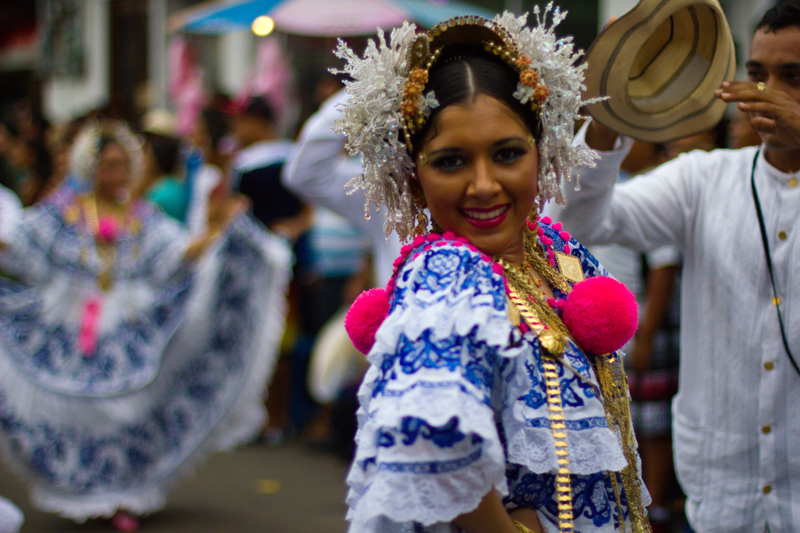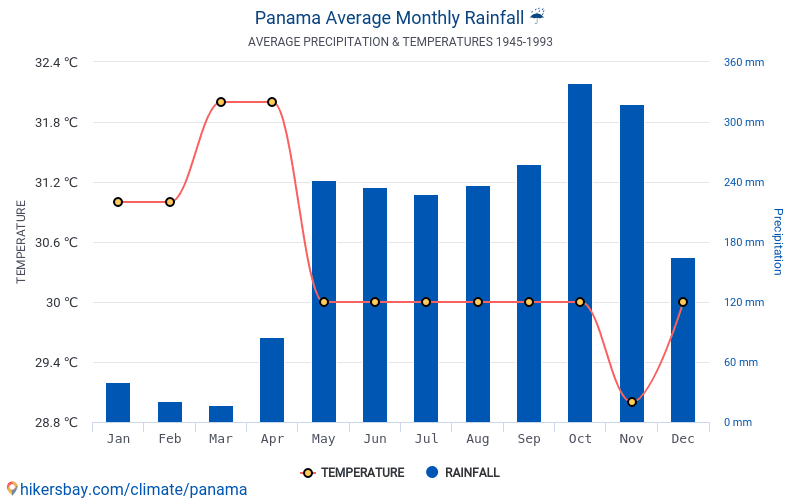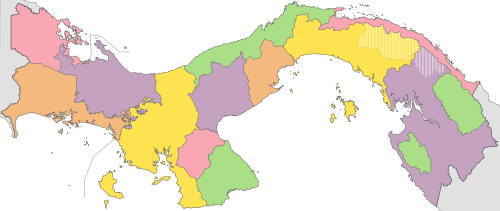Capital: Panama City
President: Laurentino Cortizo
Continent: North America
Population: 4,315 million (2020) World Bank
Currencies: Panamanian balboa, United States Dollar
Official language: Spanish
Panama is the southernmost country in Central America and is bordered by Costa Rica and Colombia. The Panama Canal, a famous feat of human engineering, cuts through its center, linking the Atlantic and Pacific oceans to create an essential shipping route. Panama City is the capital and the largest city with a population of 900.000 (2020).
Panama was inhabited by indigenous tribes before Spanish colonists arrived in the 16th century. It broke away from Spain in 1821 and joined the Republic of Gran Colombia, a union of Nueva Granada, Ecuador, and Venezuela. After Gran Colombia dissolved in 1831, Panama and Nueva Granada eventually became the Republic of Colombia. With the backing of the United States, Panama seceded from Colombia in 1903, allowing the construction of the Panama Canal to be completed by the United States Army Corps of Engineers between 1904 and 1914. The 1977 Torrijos–Carter Treaties agreed to transfer the canal from the United States to Panama on December 31, 1999. The surrounding territory was first returned in 1979.
Revenue from canal tolls continues to represent a significant portion of Panama's GDP, although commerce, banking, and tourism are major and growing sectors. It is regarded as having a high-income economy. In 2019 Panama ranked 57th in the world in terms of the Human Development Index. In 2018, Panama was ranked the seventh-most competitive economy in Latin America, according to the World Economic Forum's Global Competitiveness Index. Covering around 40 percent of its land area, Panama's jungles are home to an abundance of tropical plants and animals – some of them found nowhere else on earth. Panama is a founding member of the United Nations and other international organizations such as OAS, LAIA, G77, WHO, and NAM.
Currency
The official currency of Panama is the Balboa, named after Spanish explorer Vasco Núñez de Balboa, who discovered the Pacific Ocean in 1513. One Balboa is divided into 100 cents. Since 1904 one Balboa equals one US Dollar and since then, the US Dollar has legally circulated in Panama. In other words, in practice, the currency used day-to-day in Panama is the US dollar, which is also legal tender. For this reason, Panama is considered a dollarized country and was the second economy in the continent to become a dollarized economy. Currently there are Panamanian coins that have the same weight, dimension and composition of the coins used in the USA (1, 5, 10, 25 and 50 cents). Panama also has its own $1 coin. For paper money, only the US Dollar is used (there are no paper Balboas).
Govt

Panama is a representative democracy with three branches of government: executive and legislative branches elected by direct vote for 5-year terms, and an independently appointed judiciary. The executive branch includes a president and two vice presidents. The legislative branch consists of a 78-member unicameral National Assembly. The Constitution was changed in 2004, however, and beginning with national elections in 2009, the executive branch will have only one vice president, and the membership of the National Assembly will be capped at 74. The judicial branch is organized under a nine-member Supreme Court (each judge is appointed for a 10-year term) and includes all tribunals and municipal courts. An autonomous Electoral Tribunal supervises voter registration, the election process, and the activities of political parties. Anyone over the age of 18 may vote.
Culture

Panama’s culture is a blend of African, American Indian, North American, and Spanish influences, which are expressed in its traditional arts and crafts, music, religion, sports, and cuisine. Panamanian music is popular throughout Latin America, and the country is known as well for its many festivals. Other aspects of traditional culture are well preserved, especially by the country’s Indian peoples. Panama is a cultural melting pot, adapting elements from a wide variety of sources and valuing innovation as much as the good things of the past.
FOREIGN RELATIONS

Panama is a member of the UN General Assembly and most major UN agencies, and started its fourth term as a member of the UN Security Council in January 2007. It maintains membership in several international financial institutions, including the World Bank, the Inter-American Development Bank, and the International Monetary Fund.
Panama is a member of the Organization of American States and was a founding member of the Rio Group. Although it was suspended from the Latin American Economic System--known informally both as the Group of Eight and the Rio Group--in 1988 due to its internal political system under Noriega, Panama was readmitted in 1994 as an acknowledgment of its democratic credentials.
Panama is a member of the Central American Parliament as well as the Central American Integration System (SICA). Panama joined its six Central American neighbors at the 1994 Summit of the Americas in signing the Alliance for Sustainable Development, known as the Conjunta Centroamerica-USA or CONCAUSA, to promote sustainable economic development in the region.
Climate

In Panamá, the wet season is overcast, the dry season is windy and partly cloudy, and it is hot and oppressive year round. Over the course of the year, the temperature typically varies from 75°F to 90°F and is rarely below 74°F or above 93°F.
Based on the beach/pool score, the best time of year to visit Panamá for hot-weather activities is from late December to late March.














